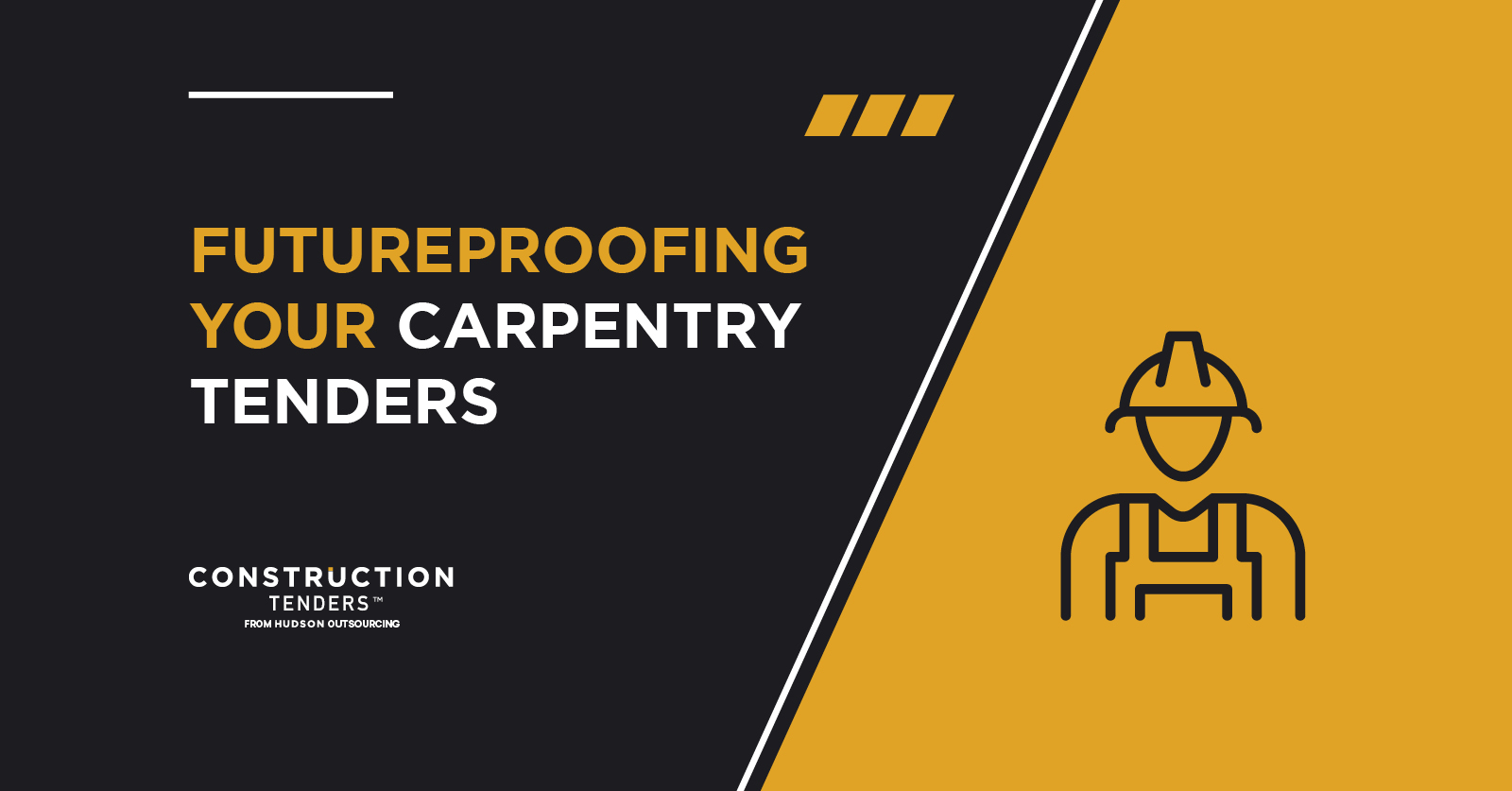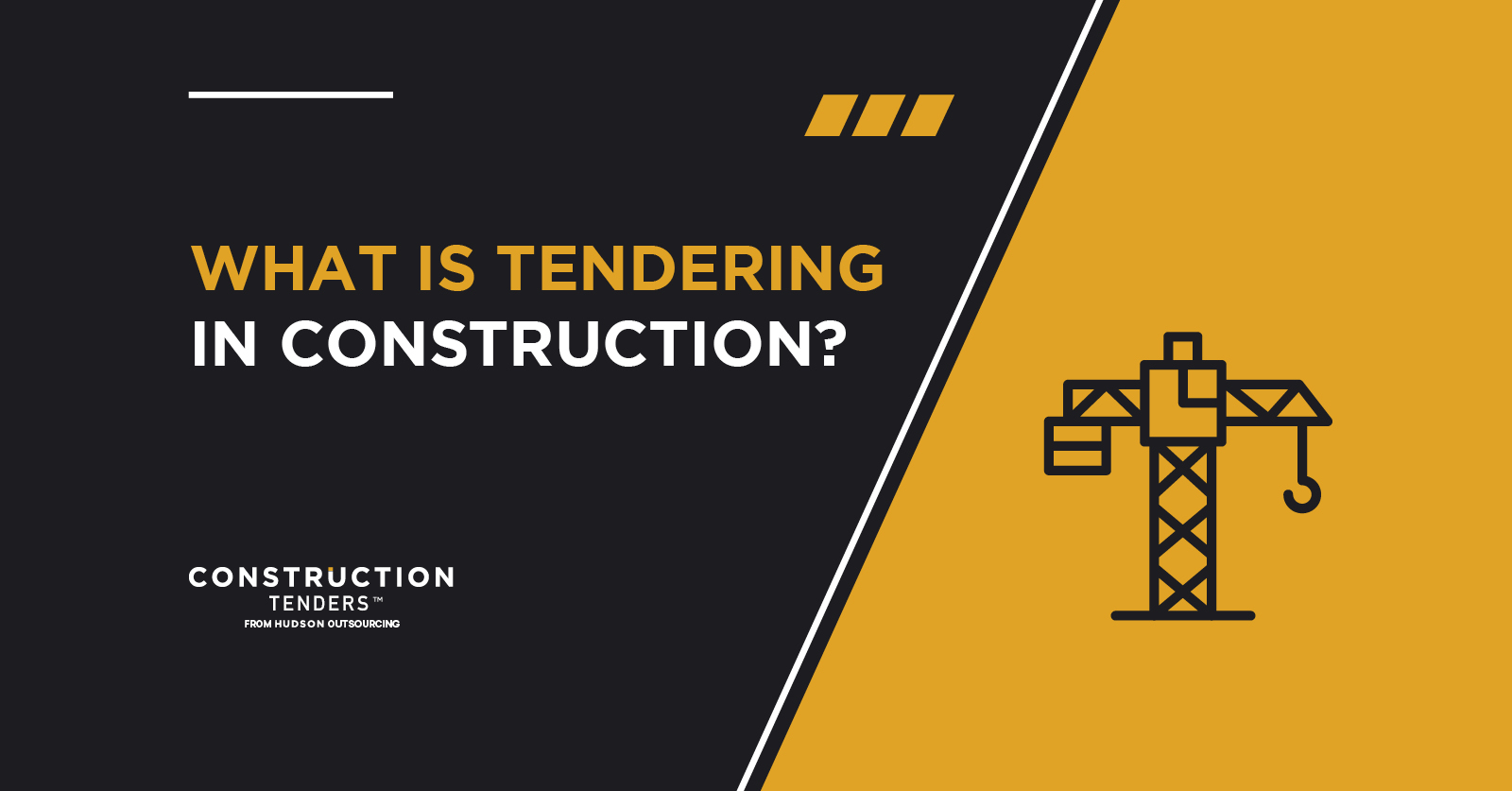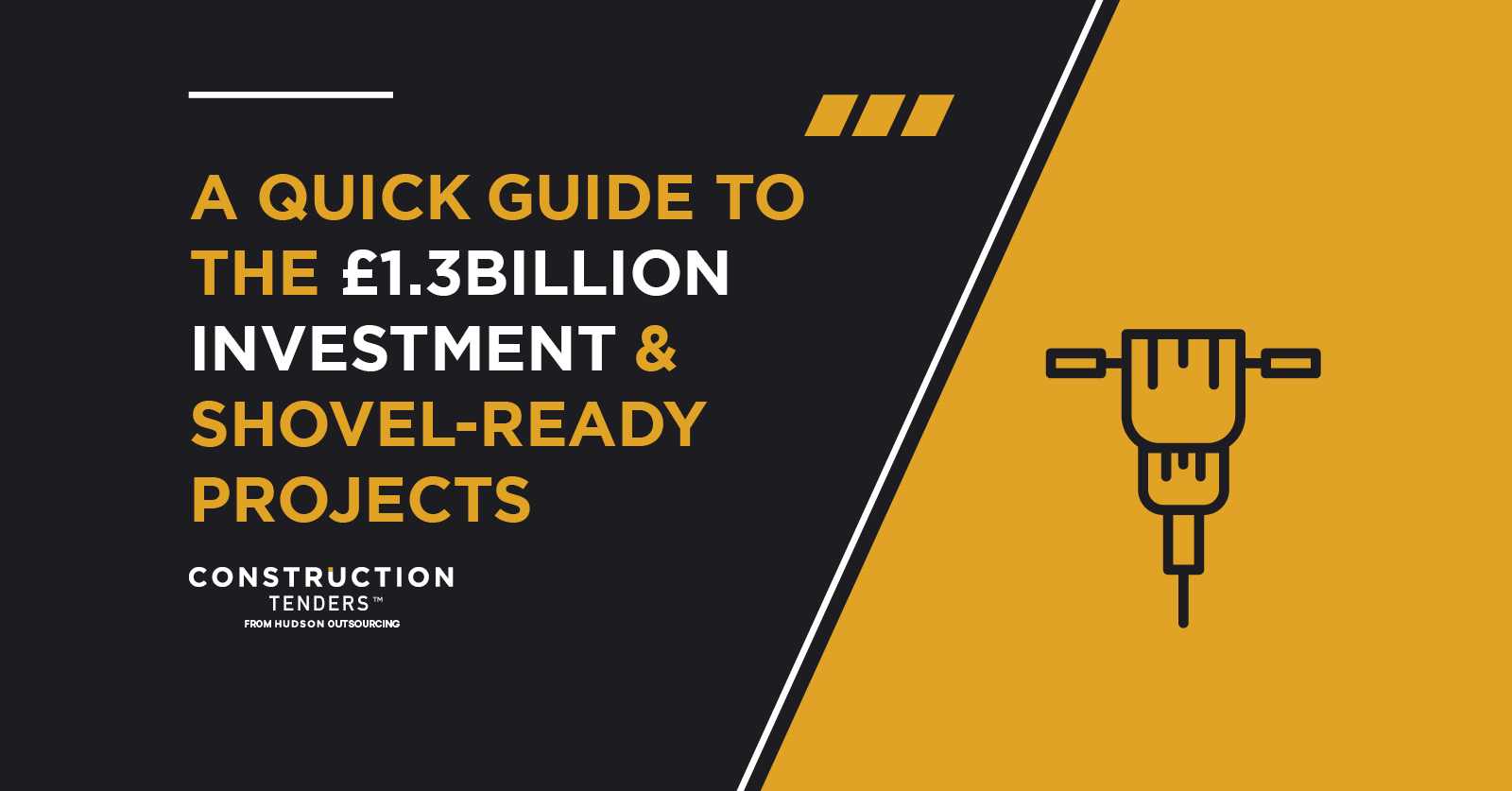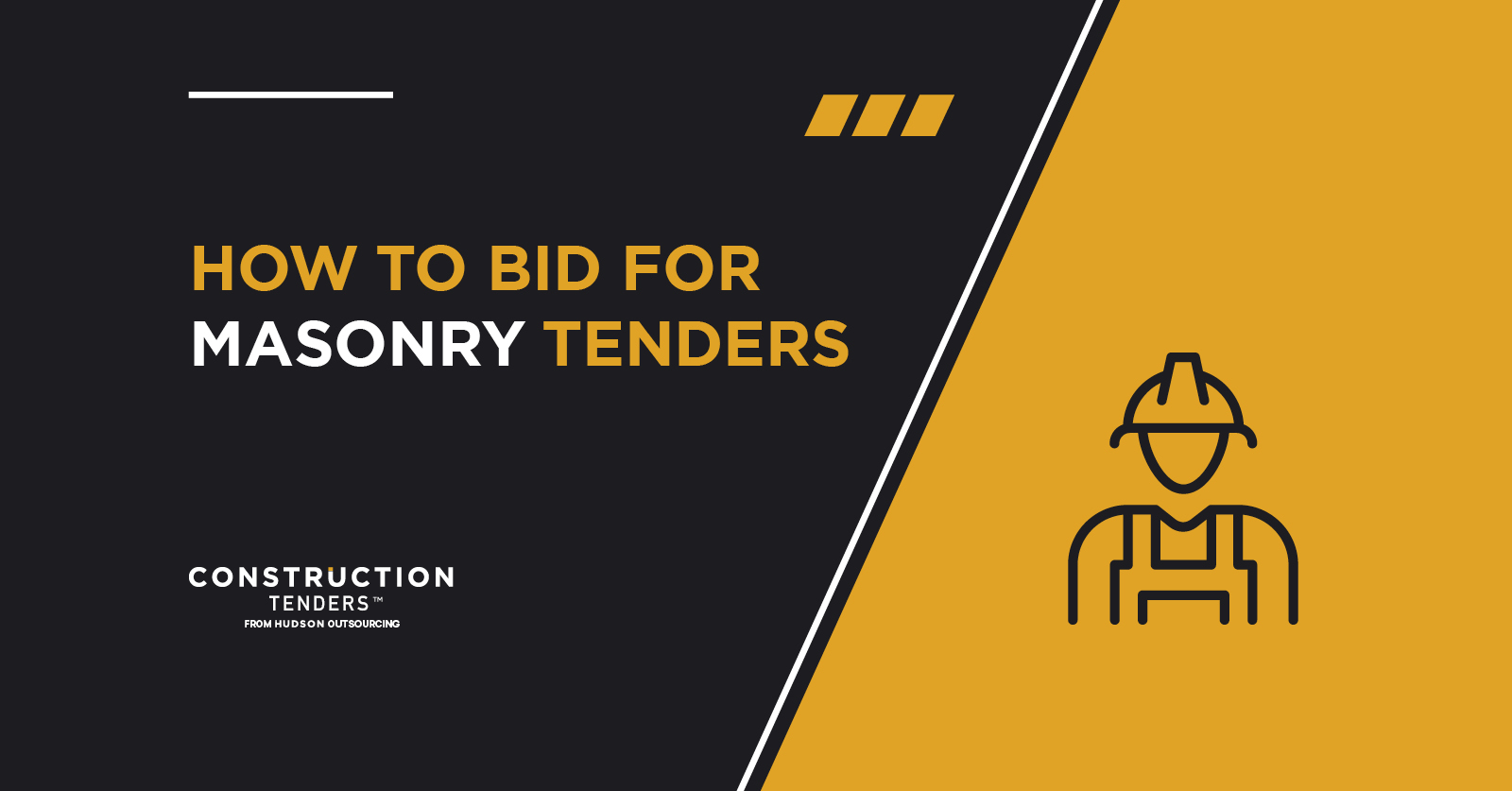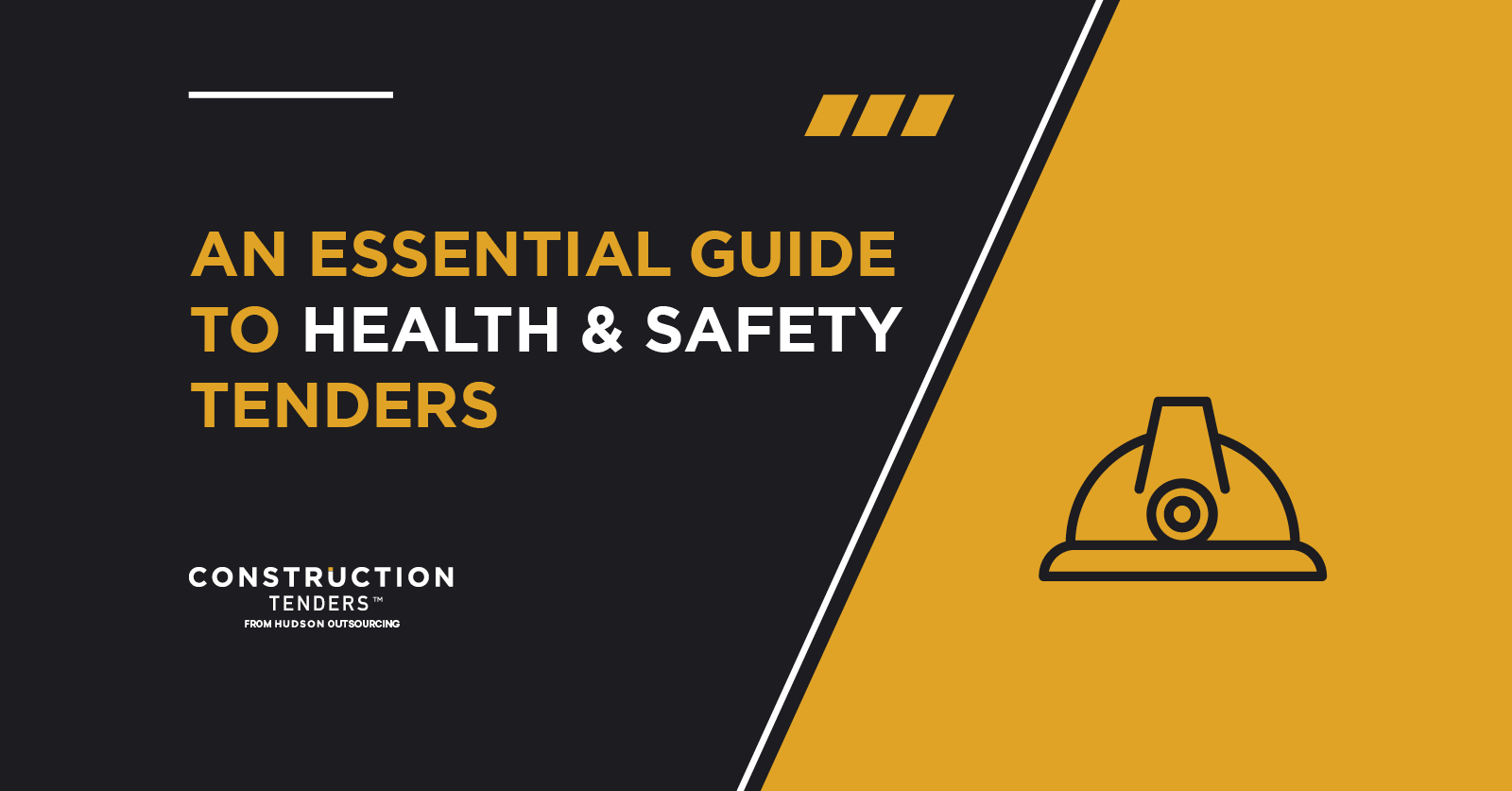A guide to architectural tenders
(Updated May 2022)
In this blog, we go through everything you need to know when applying for architectural tenders.
What is an architectural tender?
Architectural tenders are an invitation to submit a bid in an attempt to be part of a project.
Applying for architectural tenders can seem intimidating at first for small and medium-sized enterprises (SME). Especially as the government’s definition of an SME excludes over 70 per cent of UK architecture firms. However, the government is making more of an effort in order to combat this issue. Their target is to spend £1 in every £3 with SME businesses, so don’t write off applying for that tender just yet. They want to guarantee the growth of SMEs, giving smaller companies a chance at winning. This means there has never been a better time to start bidding on tenders. Over the years, construction has continued to be the largest public sector expenditure by volume and value.
There are a number of things to consider when applying for architectural tenders. Luckily, we’ve made a list of the eight most important, so you don’t have to.
-
Typical Weightings
The typical weighting of an architectural tender is roughly 70% quality and 30% cost. Although in 2018, via the Mayor of London’s Architecture, Design and Urbanism Panel (ADUP), there was a new section added. The weighting was of 70% quality, 25% cost and 5% equality, diversity and inclusion. This change appeared in some tenders, specifically in London, so it’s something to consider when looking into applying for tenders.
-
Framework Management
When applying for an architectural tender, demonstrating your proposed framework is a given. The Royal Institute for British Architecture’s (RIBA) Plan of Work 2020 is a seven-stage framework for all disciplines on construction projects. It’s probably the best place to start and the best guide to follow.
A framework agreement usually asks for multiple suppliers to deliver goods and services under one contract. Frameworks can be a good place to start if you’re a new or small business. Subcontracting opportunities may not require as much experience or turnover as if you were the sole supplier on a contract.
-
Cost Management
Although cost management could be weighted significantly less than quality it’s by no means less important, as prices are competitive. You should be considering the affordability, design fees and how you ensure project designs are developed according to affordability parameters. You might need to reflect on how you would handle a project that’s over budget. It may be worth including the lessons you’ve learnt from previous experiences and how you overcame challenges. This should be detailed in your case studies. Bear in mind that public sector buyers look for MEAT, (The Most Economically Advantageous Tender).
-
Stakeholder Management
When applying for architectural tenders, it’s important that you consider the views of all stakeholders. Ensuring they share your design vision from the start is critical. Involving stakeholders and different groups of people in the process can help you establish and prioritise their needs. Drawing on your past experience and how you have considered them in past developments.
-
Social Value
Social value is becoming an ever-important section of architectural tenders and Pre-Qualification Questionnaires (PQQs). The economic, environmental and social impact that the project will have is increasingly important. How you are planning on giving back to the local community? When bidding for central government contracts a 10% weighting or more will be placed on social value. In some tenders, it can hold the weight of up to 30%. Your sustainable development goals should maximise and promote social values. Don’t be vague. Buyers want to see you making commitments that you can keep. In this section, you should include your ISO 14001.
Within the UK, a new social value model has recently launched aiming to:
- Encourage economic growth.
- Create new jobs.
- Promote skills.
- Tackle climate change.
- Level up the UK.
These changes are now in place. It means the central government will be required to go beyond the Public Services (Social Value) Act 2012. Due to the Covid-19 pandemic, it’s important to note that the following should also be taken into consideration:
- How your organisation supports Covid-19 recovery.
- How you’re creating new businesses, skills and jobs to tackle economic inequality.
- The environmental considerations you take to help fight climate change and reduce waste.
- The equal opportunity policies you implement and adhere to within your organisation.
-
Relevant Experience
Demonstrating relevant past experience is key when applying for architectural tenders. If you can show a proven track record of projects with similar complexity, it’s a better indicator of capability. Although, you still want to keep it relevant and including past works in similar geographical areas is also a bonus.
Each bid should be tailored and compelling, fitting in with the specification and what is required. For example, if a buyer requires affordable housing in Coventry, include previous experience in designing such housing in a similar area. If you only have experience with designing high-rise educational institutions in Hong Kong, then it probably isn’t suited to you. This is because as you may not have the relevant experience they require. The recommended timeframe of previous experience is typically within the last five years, so it’s worth taking that into consideration.
-
CVs
Architectural tenders might ask you to show you have the right, qualified professionals on your team to deliver the services. For this, you may have to create CVs of your employees. They need to include their job title, past experience and what they can bring to the project. Tailoring your CVs to the given opportunity and project specification you are given is crucial. You don’t want to simply copy and paste from previous tenders. Pay attention to the specification, mention any organisational qualifications, staff training and certifications they have.
However, developing your company CVs in advance is recommended. Creating the outline will save you time in the future and help you respond to tenders reactively. Remember to double-check the content and add any necessary information to tailor the CV to the specification before submitting.
-
Flexibility
You can plan as much as you like, but we all know that changes to the scope are a given. Being able to demonstrate that you can be flexible is a must. Adjusting to changes along the way is crucial to succeeding when bidding for architectural tenders. Buyers want to see how you will deal with an unexpected spanner in the works.
3 Types of architecture tenders
When looking for architecture tenders, they usually fall under these three service categories:
- Design development
Architecture tenders that fall under this service sector means that you will be responsible for the creation of the design. This could be detailed drawings of what the new building or re-design will look like. It will most likely also include the schematics of the project, outlining materials, measurements, and any other requirements necessary. From this, a project manager will use the drawings to begin the project.
- Design preparation
Due to the nature of architecture services, architecture tenders can become the starting point for further bids. This means, that architecture services required by buyers may be used to produce documents needed for other work. For example, a buyer could seek an Architect to draw up specifications for a new project. In turn, this could then be used to create a new bid seeking construction services. It will most likely include cost forecasts, material sourcing, and sourcing construction services. It will also mean creating ‘construction-ready’ documents. This means that your plans are easily conveyed to others, beyond your services.
- Construction administration
Buyers could be seeking architectural services for full project development. This will involve everything mentioned above, but also includes project managing the whole process, from start to finish. It could also include producing bids for construction work and negotiating with suppliers. There will also be quality management services, site surveying and health and safety checks involved.
Let’s Summarise
Understanding your services and what you can provide to buyers is the first step when sourcing architecture tenders. The three types of architectural services buyers usually seek are:
- Design development
- Design preparation
- Construction administration.
Once you have established which service sector you belong to, you can begin to bid on architectural tenders. Remember when beginning the bid process, the eight things you need to consider within your bid response are:
- What the weighting of the tender is
- Framework management considerations
- Cost management procedures
- Stakeholder management procedures
- Your social value
- Showcase your relevant experience
- Include CVs to show your qualifications
- Flexibility management
Now you should be in a better place to begin sourcing, and bidding on new architectural tenders.
Where can I find architectural tenders?
Once you’ve taken all of this information into account, you might be asking yourself where you can find such opportunities. You likely don’t have the time to look through 1000+ websites every day but luckily for you, we have the solution.
Construction Tenders is an opportunity tracking platform. We source all the tenders from across the UK and upload the construction leads in one convenient place.
A subscription with Construction Tenders offers your business:
- A team of opportunity trackers sourcing architectural tenders from 1000’s of sites.
- Access to all private and public sector construction bids in the UK.
- The ability to filter opportunities by keyword, location, budget and more.
- No reliance on CPV codes or algorithms. Our team manually upload each tender making sure that you have access to 100% of architectural tenders.
- Discounted support from Hudson Succeed, our bid writing division.
- 20-minutes of free consultancy every month with our bid experts.
Here are just a few examples of architectural tenders we sourced recently:
Architectural Services
East Anglia Reserve Forces & Cadets Association – South East – Budget: £200,000
Architect for the Redevelopment of Cliff House & Bath Tap Site
East Suffolk Council – Eastern – Budget: £75,000
Montrose Zero Four – Objective A – Architect Services
Crown Estate Scotland – Scotland – Budget: £160,000
3212/SW Architectural Services for Central Teaching Laboratory
University of Sheffield – Yorkshire and Humber – Budget: £1,500,000
Architectural Services for Additional Accommodation
Loreto Junior School (Scoil Muire Ogh 2 Dublin) – Republic of Ireland – Budget: £1,180,000
Book a Demo with Construction Tenders
The best way to venture into the tendering world is through booking a free live demo of Construction Tenders. Why not contact us today to find out more about how Construction Tenders can benefit your business.
Need help writing your next architecture tender?
If you do not have the resources or time to write a winning bid, why not outsource it? Our sister company, Hudson Succeed, boasts an 87% success rate and has over 60 years of collective bidding experience. They offer four bid writing support packages to help you on the path to success. Whether you are new to tendering or need someone to proof your written response before you submit – we can help.
Tender Ready
Our Tender Ready programme is designed for those who have never tendered before. This 4-week programme works with you to ensure you have everything in place to tender successfully.
Tender Improvement
Tender Improvement can help if you are already tendering but are not seeing success from your current efforts. Our Bid Writers will assess your previous submissions and supporting documents. They will give you feedback and guidance on how to improve, helping you to secure your next architecture tender.
Tender Mentor
If you have written a tender and need someone to proofread it – Tender Mentor is for you. A Bid Writer will double-check it is in line with the specification and free of any grammar or spelling mistakes.
Tender Writing
If you have found the perfect tender but do not know where to start – we can help. Send the specification over to us and our Bid Team will do the rest. They will let you know what they need from you and provide you with a full breakdown. They will even submit it on your behalf, leaving you more time to focus on your business.
Get in touch to find out more information.
Want to save even more time? Upgrade to Discover Elite…
Upgrade to Discover Elite to ensure you never miss a tender, even when you are busy. The Ultimate Time-Saving Tool and the Become a Pre-Bid Master packages can improve your competitor awareness and bidding success rate. They can help save you even more time when searching for construction tenders.
The Ultimate Time Saver package offers:
An annual subscription to a maximum of two Hudson Discover sector-specific portals. This option best suits a business that overlaps two industries such as Construction and Logistics.
- A maximum of five tender breakdowns per month.
- Weekly phone calls with your dedicated Account Manager to discuss viable tendering opportunities.
- Pre-market and award engagement notices monitored on your behalf.
- Buyer portal management including registration, password management, downloading documents and assessing viability based on your bid or no-bid strategy.
The Pre-Bid Master package offers your business:
- All the above
- Up to seven tender breakdowns per month
- A Bid Strategy delivered by a Senior Bid Manager with a minimum of 5 years of experience. It will also be managed by our Global Bid Director.
Contact us to find out how Discover Elite can work for you.
We actively source tenders for the following sub-sectors:
- Architectural Tenders
- Refurbishment Tenders
- Brickwork Tenders
- Building Works
- Health & Safety Tenders
- Small Construction Tenders
- Civil Engineering Tenders
- Electrical Tenders
- Surveying Tenders
- Demolition Tenders
- Flooring Tenders
- Glass Tenders
- M&E
- Cost Consultancy
- Painting Contracts
- Decorating Tenders
- Masonry and many more.


